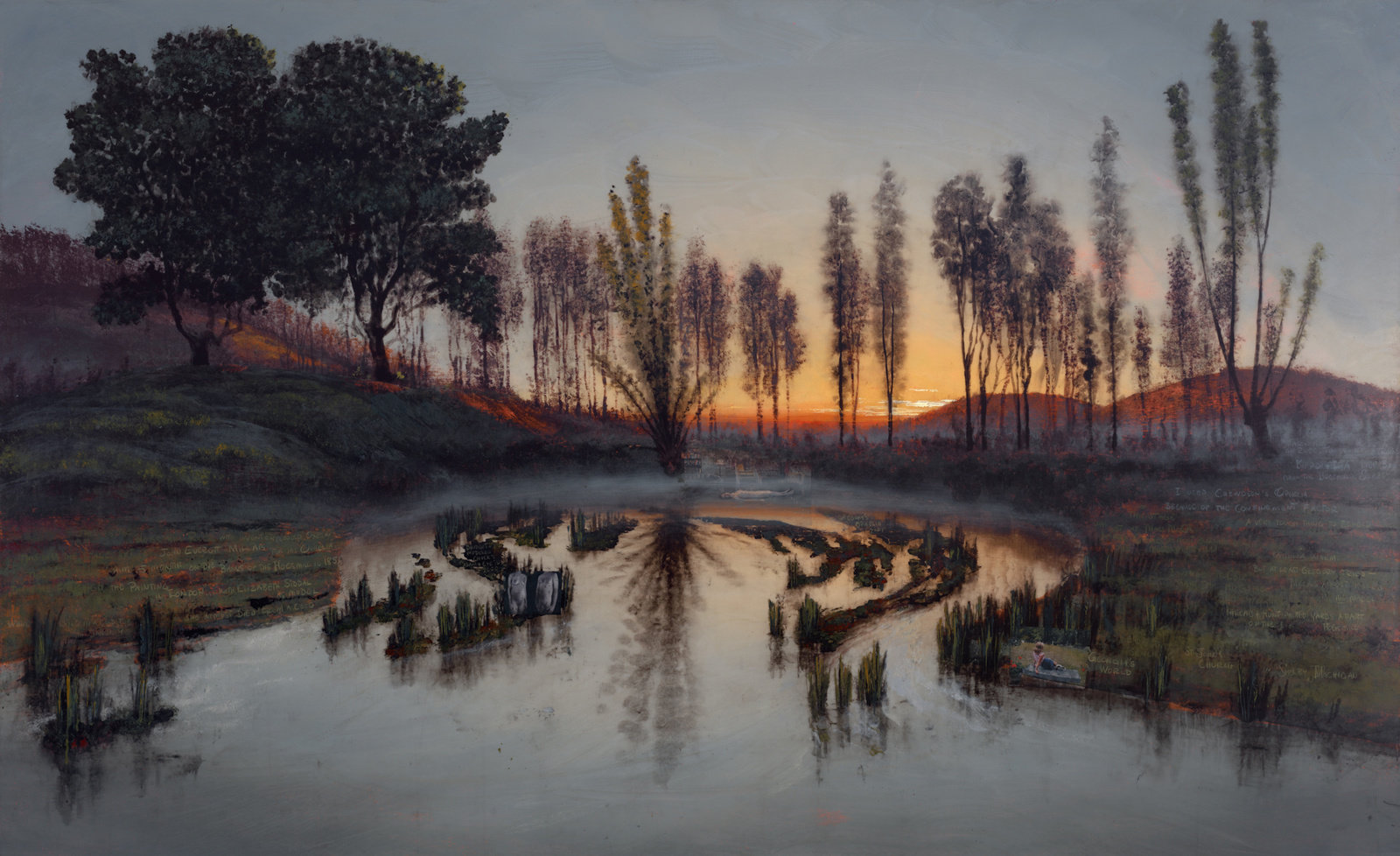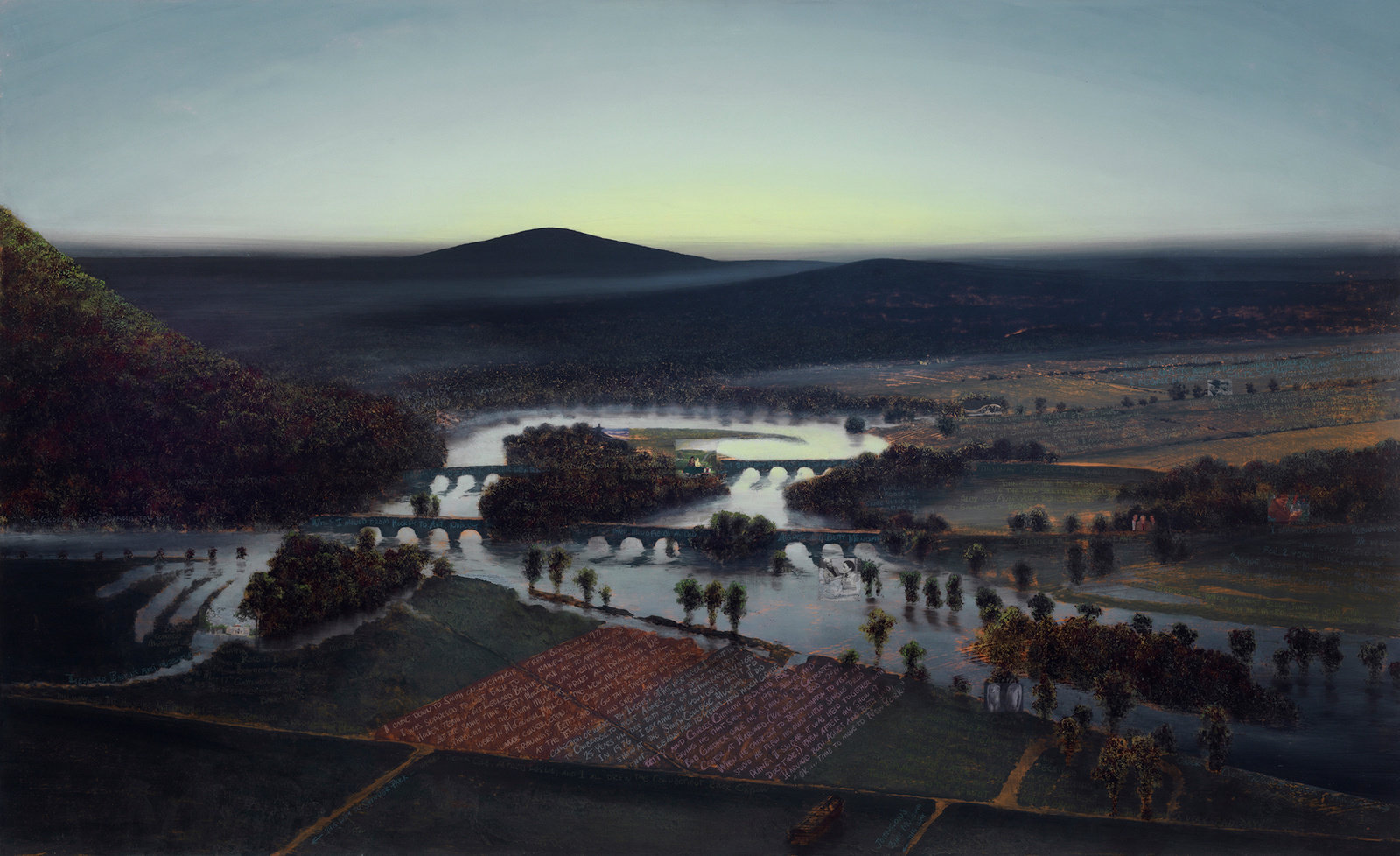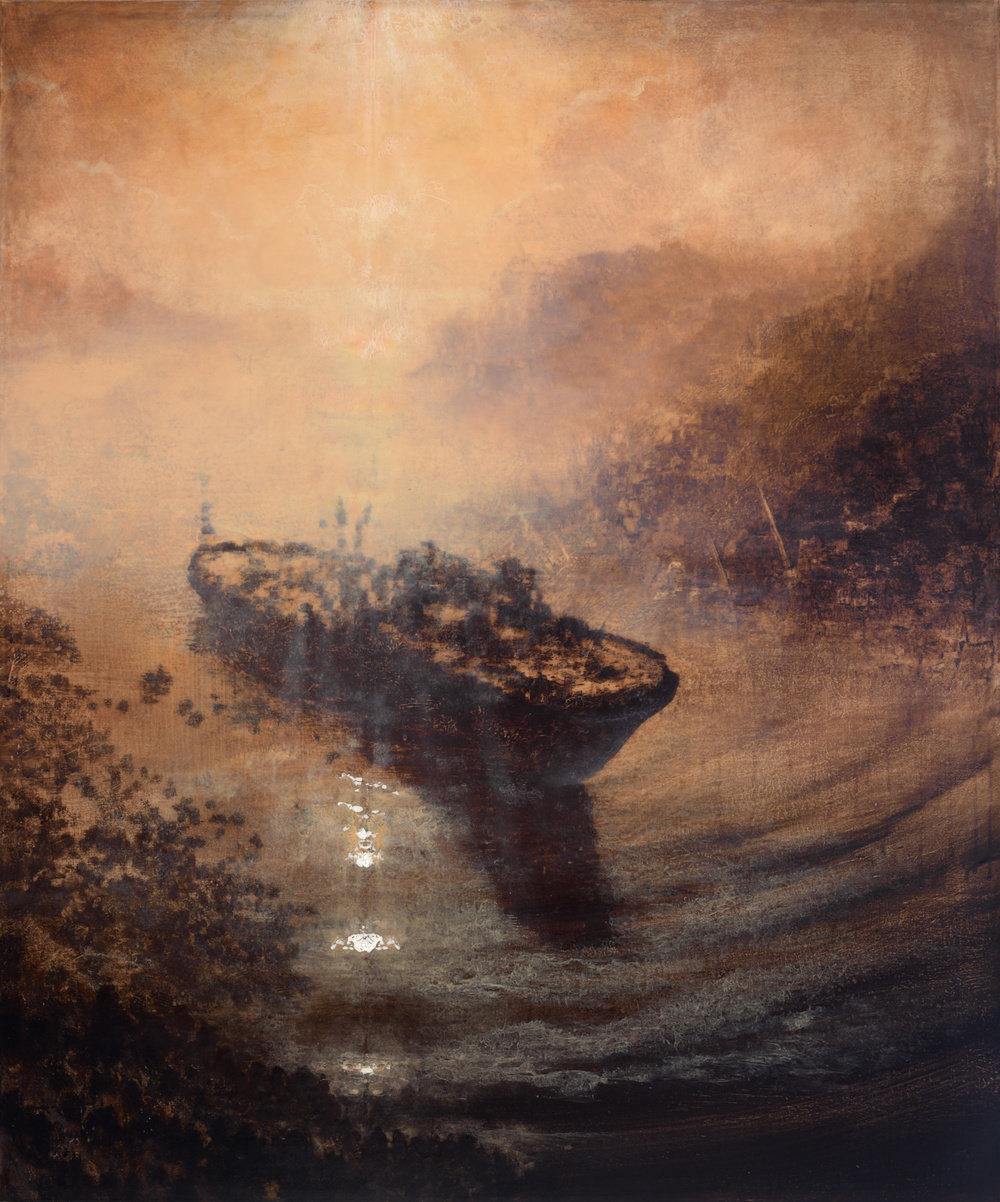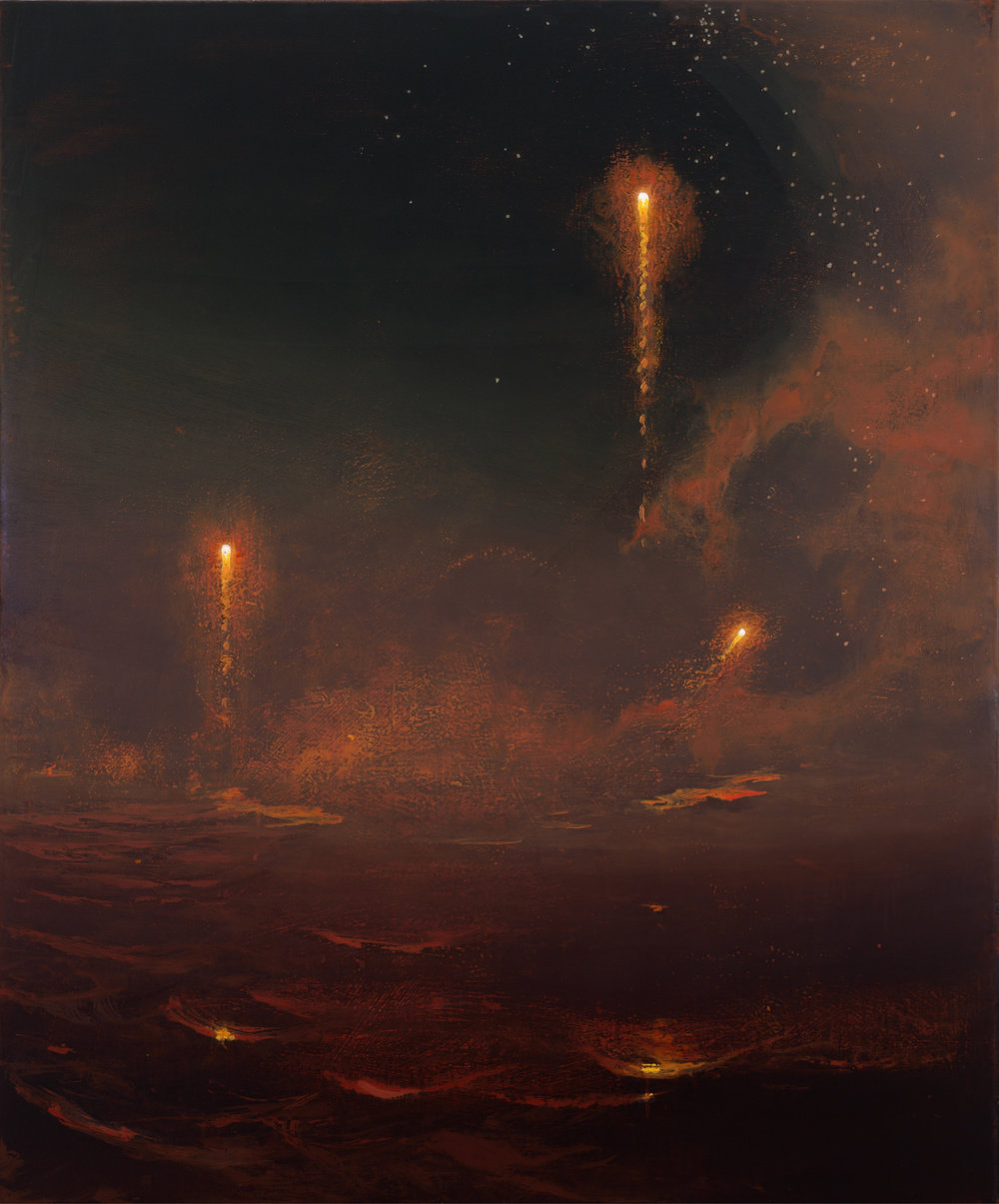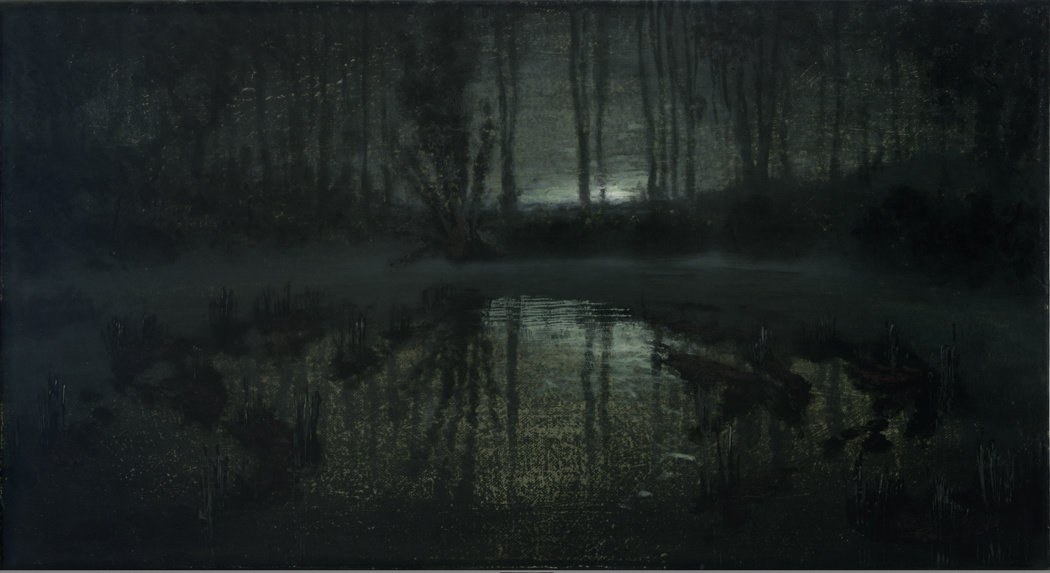Marlborugh is pleased to announce an exhibition of Stephen Hannock’s recent paintings featuring new large and small scale paintings which continue his signature exploration of light and landscape.
Stephen Hannock was born in Albany, New York in 1951 and lives and works in Williamstown, Massachusetts. His singular techniques—extensive layering of color and collaged elements as well as lacquered surfaces that have been buffed to a dreamlike sheen—make each painting, no matter its size, instantly idideent ntifiable as his own. Hannock’s ad able dition of diaristic texts and photographic images to the mountains, trees and fields is his unique contribution to 20th Century landscape painting. Hannock, in essence, interrupts the realism of his landscapes by making them selfportraits.
The Oxbow, a naturally formed loop in the Connecticut River as viewed from nearby Mount Holyoke, was memorably rendered in oil on canvas by Thomas Cole in 1836. For Hannock the Oxbow has become a favorite theme and inspiration; he has reworked and interpreted this vista many times over the course of his storied career. Each Oxbow is a reinvented, not-quite naturalistic place that has sprung from the artist’s imagination. It is a stage of sorts upon which a painted narrative will take place. Hannock embraces experimentation and even accident, and the results can range from tranquil to euphoric.
In the current exhibition the painter takes as his muse Ophelia, lover of Hamlet in Shakespeare’s tragedy and the subject of portraits by artists from British master Sir John Everett Millais to contemporary American photographer Gregory Crewdson, both of whom have inspired Hannock’s newest body of work. Ophelia, of course, memorably and mysteriously drowns, with flowers upon her that are described by the Bard as “sweets to the sweet.” She is a personification of sunset, that stunning, symbolic time of day. As Metropolitan Museum of Art Curator Emeritus Carrie Rebora Barratt points out in the exhibition’s catalog, Hannock has redoubled her watery circumstances by placing her in his already flooded Oxbow scene. Flooding, for Hannock, signifies not a catastrophic weather event but rather a cleansing of debris and history from these inherently theatrical natural locales.
In addition to the new Oxbow paintings, Hannock presents fresh examples of his Flooded Rivers, a panoramic cityscape, and Incendiary Nocturnes. Incendiary Nocturnes are strikingly rendered images of fireworks or rockets bursting in dense skies that were initially inspired by James McNeill Whistler’s treatment of the subject. The light in these gem-like paintings is depicted at its brightest—and final— moment. Light appears only while disappearing. Like every Hannock creation, the paintings in the exhibition appear, through a kind of virtuosic feat, to be lit from within. They have polished surfaces that are simultaneously illuminating and distancing. The surface of each painting acts as elegant mask or scrim for the imagined landscape coming into view just behind it.
Stephen Hannock’s work is found in public collections throughout the United States, including the Metropolitan Museum of Art, the National Gallery of Art, the Whitney Museum of Art, the Boston Museum of Fine Arts, the Museum of Contemporary Art, San Diego, the Smithsonian American Art Museum, the Museum of Fine Arts, Houston, and numerous other collections. His work has been selected for inclusion in the newly released publication The Metropolitan Museum of Art: Masterpiece Paintings.
An illustrated color catalogue will be available during the exhibition.
Works
